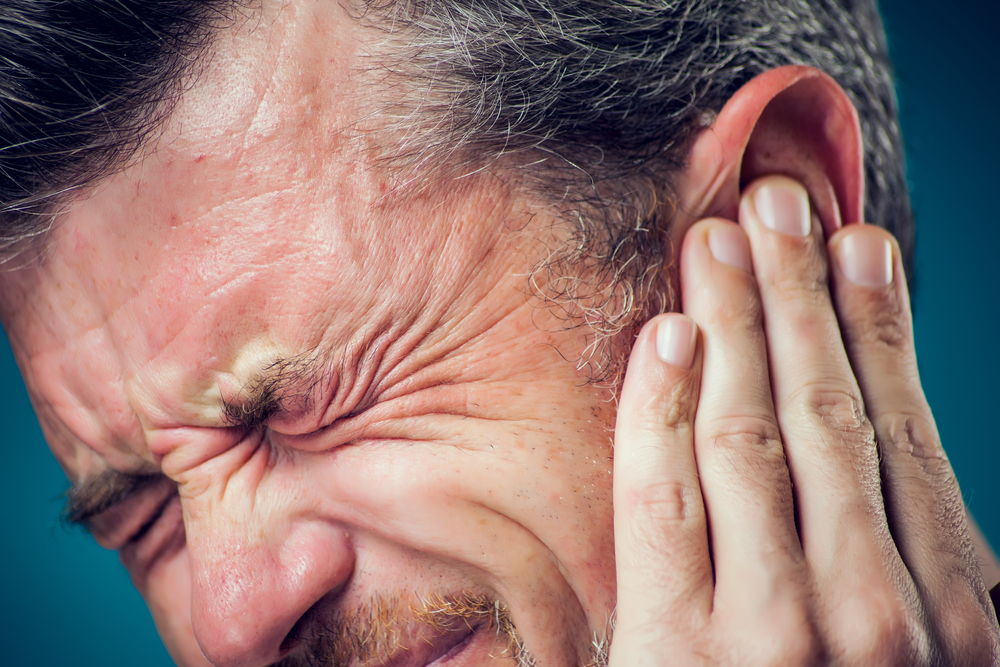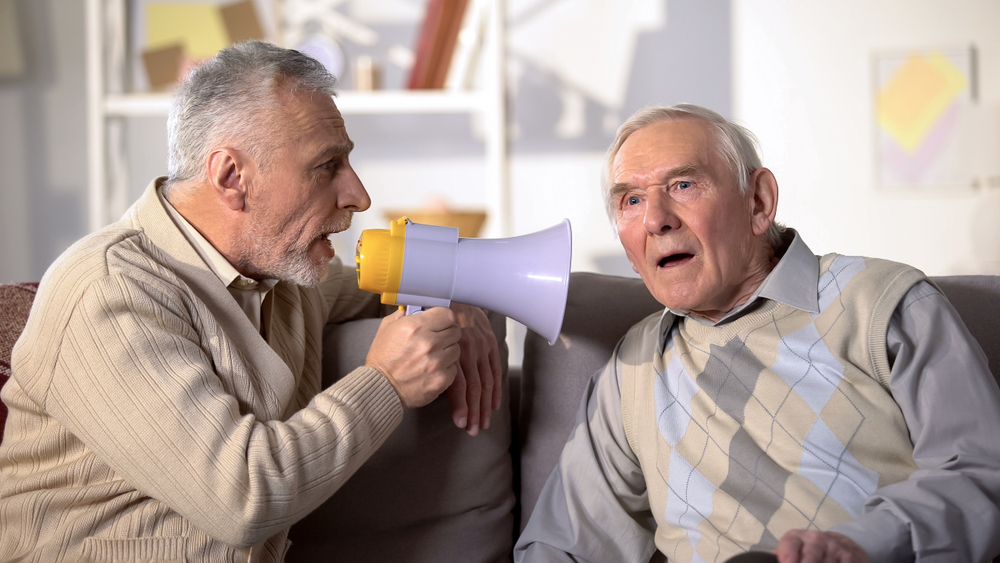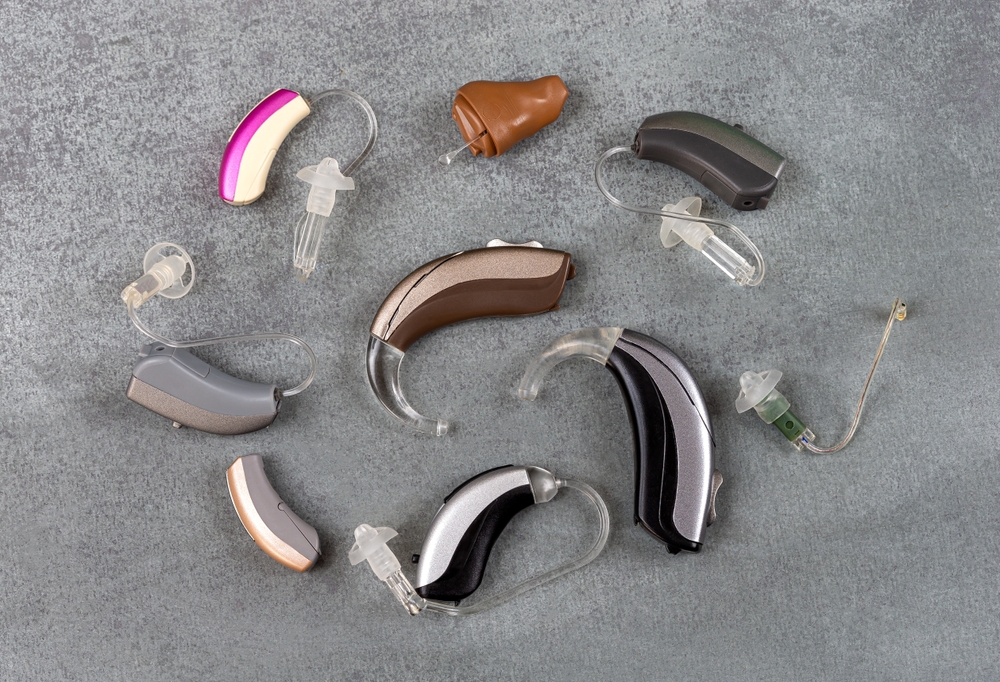Tinnitus is an unwanted, persistent intruder in our everyday lives that many of us are all too acquainted with. Imagine a soundtrack that plays just for you—a ringing, whistling, or buzzing that no one else can hear. Tinnitus is a ghostly sound and a complicated collage of noises that may influence our lives that we may not fully understand at first.

Individual differences exist in Tinnitus, characterized as a sound in the brain with no external source. Some hear a faint ringing, while others hear a flurry of whistles, chirps, hisses, hums, or even shrieks. This noise disturbance may come from one or both ears, within the brain, or even, eerily, from a distance. It alternates between being a consistent buddy and a sporadic visitor, keeping a steady or pulsing pace throughout.
It keeps coming up, but how can we get the ringing stopped? The article aims to address the puzzles surrounding Tinnitus, providing insightful information about its nature and workable ways to control and lessen its adverse effects on our quality of life.
What is Tinnitus?
The fundamental paradox of Tinnitus is the ability to perceive sound when no external auditory stimuli are present. It’s as if the mind performs a secret symphony with various noises that may vary from the repetitive cadence of waves slamming against invisible coasts to a haunting high-pitched ringing. The resulting sound may echo in one ear, harmonize in both, or appear out of nowhere from the recesses of the subconscious.
The noises people feel from Tinnitus are as varied as how they describe it. It’s a racket that sounds beyond typical auditory perceptions—a buzzing, a hissing, a humming, a whistling. Tinnitus may take many forms, from the subtle melodies of songs and tunes to the unnerving ticking of an unseen clock that defies our basic notion of what constitutes sound.
Differentiating Between Subjective and Objective Tinnitus
Subjective vs objective is an essential difference in the study of Tinnitus. The auditory cortex is thought to be the source of aberrant neuronal activity that causes subjective Tinnitus, which is similar to a phantom melody. It’s a melancholy symphony formed internally, coupled with abnormalities in the auditory system. Visualize it as the brain’s reaction to an inexplicable rhythm, analogous to phantom limb agony after amputation.
However, objective Tinnitus exists beyond the boundaries of perception. In this case, the middle ear’s physiological processes are the natural noise source. Blood vessels, via their enhanced or turbulent fluxes, become unintentional orchestrators of sounds. Like invisible percussionists, muscle spasms add their clicking notes to the symphony, which may be heard by those nearby and the afflicted.
Common Causes and Triggers of Tinnitus
Tinnitus is a confusing origin story that often begins with the little hairs in the ear that carry sound waves. Meniere’s disease, a malicious conductor, connects the theatre, bringing Tinnitus, vertigo, intermittent hearing loss, and a sense of pressure on the inner ear.
However, Tinnitus is caused by multi-instrumentalist, diverse composition.
- Earwax buildup
- Injury to the ear
- Side effects from drugs like NSAIDs, antibiotics, or antidepressants
- Temporomandibular joint (TMJ) disorders
- Blood vessel disorders
- Nerve damage
- Exposure to loud noises
- Age-related hearing loss
Doctors are like skilled conductors in deciphering the symphony of Tinnitus; they listen to the notes of the condition and the complex melodies of other symptoms and medical histories.

Types of Tinnitus
Like a complex symphony, Tinnitus may take on several shapes, each telling a different story that combines with the person’s physical and emotional experiences.
1. Subjective Tinnitus
Suppose a tune that is unique to you, a sad arrangement that reverberates only in your head. This is the core of subjective Tinnitus: a very private, inside symphony that stays a lonely experience no matter how loud it becomes. This kind of Tinnitus is the most common, in which the symphony of sounds is played just for the affected person, and others are unaware of the notes floating through the atmosphere.
The experience is made more difficult by the emotional weight of realizing that the noise is only present in one’s awareness, transforming the symphony into a very intimate mental soundtrack.
2. Tinnitus Objective
Objective Tinnitus. The interior passageways of the mind are not the only places where sound is orchestrated. Instead, it comes from mechanisms close to the ears, like an enigmatic reverberation from a faraway world. Its presence becomes tangible when a stethoscope or sensitive microphone bridges the audible and the perceivable, even when it is not loud enough to be heard from a distance.
Objective Tinnitus, often seen in the quiet confines of a doctor’s office, manifests as a partnership between the patient and the mechanical mechanisms in and around the ears. It links the internal and exterior worlds, exposing the enigmatic Tinnitus to scientific examination.
3. Pulsatile Tinnitus
Pulsatile Tinnitus is a rhythmic composition seen in the auditory weave of Tinnitus. This manifestation delivers a repetitive sound miming the cadence of blood vessels near the ears, much like the soul’s heartbeat. Pulsatile tinnitus, a rhythmic or roaring symphony, adds a throbbing heartbeat to the silent melodies, transcending the typical hums and whistles.
This particular kind might be caused by a blood vessel disease like atherosclerosis, in which deposits cause narrow arteries to swell, or idiopathic intracranial hypertension, a quiet pressure buildup within the skull. Pulsatile tinnitus, with its rhythmic dance, demands a deeper inquiry into the complexities of the circulatory system and its profound relationship to the symphony of noises inside.
Medical Evaluation and Diagnosis
Like a mysterious language, Tinnitus often hides its genuine meaning. Periodic Tinnitus requires medical treatment, although occasional ringing can be written off as a transient inconvenience. Getting expert assistance is not just an option—it’s an essential first step in understanding the body’s hidden communications. The significance of seeking medical advice for continuous Tinnitus goes beyond the senses and into the complex fabric of your general health.
Expert assistance becomes a guiding hand that helps you navigate the maze of possible causes and fixes. It transforms the overpowering symphony into digestible notes, and each diagnostic step advances your grasp of the underlying principles of your aural composition.
The diagnosis process starts with a talk, an exchange between you and a medical expert skilled in listening to the sounds within your ears and what you say. A thorough medical history is the first step in piecing together the tale of your body’s experience.
And that’s when the tests and exams start as well. Audiological assessments examine the complicated interplay of sound transmission by examining the delicate dance of your ear’s mechanics.
Blood tests may sometimes be the detectives’ way of looking for unseen causes, such as autoimmune illnesses, hormone imbalances, or vascular problems that could be part of the internal symphony. Together, the patient and the healthcare professional decipher the language of Tinnitus and reveal the underlying tale, making the diagnostic procedure a cooperative endeavor.
Common Medical Conditions Associated with Tinnitus
During the diagnostic examination, Tinnitus, which often coexists with various medical disorders, exposes its many relationships. There are a large number of possible partners for this audio symphony. Every ailment contributes a unique tone to the symphony, ranging from earwax accumulation and traumas to age-related hearing loss and severe noise exposure.
The complex soundscape incorporates subtle undertones of drug side effects, neurological diseases, and vascular abnormalities.
Lifestyle Factors and Tinnitus
Like an accomplished artist, Tinnitus reacts to the subtleties of our living choices and the outside world. Let’s look at the influence of stress, the nutritional symphony of vitamins and foods, and the booming echoes of exposure to loud stimuli.
Stress:
Research shows a strong link between stress and Tinnitus, with patients often reporting worsening symptoms after stressful events. The evidence is anchored in people’s emotional well-being rather than purely statistical. Between ten and sixty percent of people with chronic Tinnitus get entangled in the web of depression. Between 28% and 45% of those who are having trouble with the constant noises have anxiety symptoms, which are a tangible indicator of the emotional toll.
Interestingly, the start and progression of Tinnitus are often preceded or accompanied by psychological or mental suffering, making stress a powerful component of this complex aural composition.
Techniques for Stress Management: By practicing mindfulness techniques like meditation and deep breathing, one may escape the internal noise and go on a trip into the present moment. With its soft poses and relaxing breathing techniques, yoga becomes apparent as an exercise that balances the body and mind. A therapeutic approach called cognitive-behavioral therapy (CBT) addresses the causes of stress. It provides skills for reframing feelings and attitudes.
Dietary and Nutrients:
Vitamin B12 is a significant factor here; studies indicate that a vitamin B12 deficit may increase the risk of getting Tinnitus. The nutritional symphony doesn’t end there. An unbalanced diet that is too heavy in fat, calcium, and iron is a possible collaborator in tinnitus development.
There are, nevertheless, harmonious sounds among the cacophony of the diet. Protein-rich diets act as a shield, lowering the chance of developing Tinnitus. With their bright hues of fruits, veggies, and meats, low-fat diets become a nutrient symphony that almost appears to sing to us. The surprise here is a list of dos and don’ts and an analysis of how our food choices play a part in the delicate symphony of Tinnitus.
Nutritional Modifications for the Relief of Tinnitus:
Vitamin B12, seen as a possible ally, takes center stage. Foods high in this necessary vitamin, such as dairy, meat, and fish, take pride of place in the fight for recovery.
The clamor of high-fat, high-calcium, and high-iron diets gives way to the calming tunes of low-fat, fruit- and vegetable-rich, protein-focused nutrition, creating a delicate balance of nutrients. The plate looks like a painting, with each component adding to the internal harmony. The empowerment that comes from making thoughtful, healthful decisions—converting meals into a kind of self-care that goes beyond the senses of taste—gives this story its psychological effect.
The Roar of Loud Sounds:
The relationship between loud sounds and Tinnitus is not only anecdotal; it’s a scientific admission of the susceptibility of our auditory system. The harm caused by extended exposure to loud noises might appear as Tinnitus, characterized by a continuous buzzing, ringing, or humming sound. Keeping our ears protected becomes a self-preservation tactic in our noisy environment, a barrier against the storms that jeopardize quiet peace.
In the urban orchestra, where noise pollution is the norm, the significance of noise reduction techniques and hearing protection measures increases dramatically. Like protectors of peace, earplugs provide a barrier against the deafening tempests of loud sounds. With their technical power, noise-canceling headphones become friends in establishing quiet areas among the turmoil.

Treatment Options for Tinnitus
Treatment for Tinnitus, characterized by a recurring melody within the ears, must frequently take a subtle approach. Highlighting the possibility of medical treatments, sound therapy, hearing aids, and the therapeutic application of cognitive behavioral therapy (CBT), this article moves from medical interventions to therapeutic solutions.
1. Medical Procedures Available
Treating Tinnitus is like trying to solve a musical puzzle; the secret is figuring out and fixing the underlying causes. If earwax obstruction is the cause of your Tinnitus, removing this auditory barrier may be a simple yet efficient remedy. Tinnitus symptoms often disappear after, demonstrating the transformational potential of a simple intervention.
To address underlying blood vessel issues, a more complex strategy comprising medication, surgery, or other therapies would be necessary. When the underlying cause is addressed, the internal symphony becomes quieter, comforting those whose Tinnitus is linked to vascular complications.
Hearing aids become essential allies for those suffering from age- or noise-related hearing loss. These gadgets counterbalance continuous ringing or buzzing by amplifying the noises that need attention. Tinnitus symptoms may be relieved by carefully adjusting or changing the prescription, a careful process that involves eliminating or modifying the medicines that may be the cause.
2. Hearing Aids and Sound Therapy
Hearing aids are perfect for the complex tango between tinnitus and hearing loss. These gadgets make the noises necessary for everyday living louder, pushing the ringing into the background. A more harmonic auditory experience is orchestrated by amplifying external noises, creating a symphony of balance.
Acoustic treatment, often called sound therapy, adds another dimension to the symphony. Tinnitus maskers are similar to hearing aids in creating more tolerable noises than the internal noise of tinnitus. This sonic intervention does not cure the problem but introduces a counter-melody that lessens the ringing or buzzing. Whether using portable sound generators, bedside companions, or tabletop gadgets, the idea is to create a soundscape where Tinnitus is subdued and becomes a minor aspect of the auditory experience.
3. Using Cognitive Behavioral Therapy (CBT) to Manage Tinnitus
Tinnitus’s emotional and psychological effects cannot be overstated, even with the availability of medical and technological remedies. As a treatment option, cognitive behavioral therapy (CBT) offers coping mechanisms to lessen the discomfort associated with tinnitus symptoms. It’s an immersion into the mind, led by qualified mental health specialists or psychologists who traverse the cognitive complexity of Tinnitus.
Cognitive Behavioral Therapy (CBT) targets not only the acute symptoms but also the psychological problems like anxiety and sadness that are often associated with Tinnitus. CBT turns into a life-changing process in individual or group sessions or even via online programs, enabling people to take back control of the story of their hearing experiences.
Home Remedies and Coping Strategies for Tinnitus
Tinnitus patients may have to handle a continuous song in their ears. Still, several at-home treatments and coping mechanisms may reduce the volume of the symphony to something more tolerable.
- Techniques for Masking Noise: White noise generators provide a continuous hum that fills the room with sound, much like cuddly pets. Natural noises, such as falling leaves, soft running water, or the soft murmur of a peaceful forest, unite to form a harmonic whole. A soothing audio cocoon may be created even with commonplace home noises like the murmur of a calm conversation or the buzz of a fan.
- Relaxation Techniques and Mindfulness Exercises: Envision practicing deep breathing techniques where every breath in and out forms a rhythm, a soft dance with the breath. A path through the various muscle groups known as progressive muscle relaxation offers a mental and physical reprieve from the constant noises. The present-focused practice of mindfulness meditation provides a break from the psychological burden of Tinnitus.
- Tips for Good Sleep Hygiene for Tinnitus Sufferers: Establish a nightly ritual that involves relaxing pursuits like a warm bath or a book. Consider using background noise, whether via a white noise generator or calming music, to create a peaceful aural atmosphere. The recognition that sleep is more than just a bodily need but also a mental haven where the symphony fades into the background lends this passage its emotional resonance.
Support and Community
When taught about Tinnitus, friends, and family become not simply observers but active players on the road toward treatment. Their assistance grows into a symphony of support that transcends the aural domain and envelops people in a web of compassion and empathy.
Seeking out loved ones’ support has the same emotional effect as being a part of a professional ensemble, where every note plays a role in creating a symphony of unity.
It could be beneficial to share your experience with other tinnitus patients. There are both online forums and in-person tinnitus support groups. Selecting a group led by a doctor, audiologist, or other licensed health expert is the best way to guarantee that the information you learn in the group is correct.
Tinnitus How to Stop the Ringing
Tinnitus management is a patchwork of many strands that work together to orchestrate relief. The composition is deepened and refined by structured interventions such as medical treatments, hearing aids, and Cognitive Behavioral Therapy (CBT). Lifestyle, food, and sleep hygiene are crucial to well-being.
Doctors, audiologists, and other health specialists guide this symphony. They are crucial to creating individualized alleviation solutions, from correct diagnosis to evidence-based therapies.
As individuals adopt the tactics, seek expert help, and join a supportive group, their Tinnitus becomes softer, more tolerable, and less intrusive.



Leave a Reply